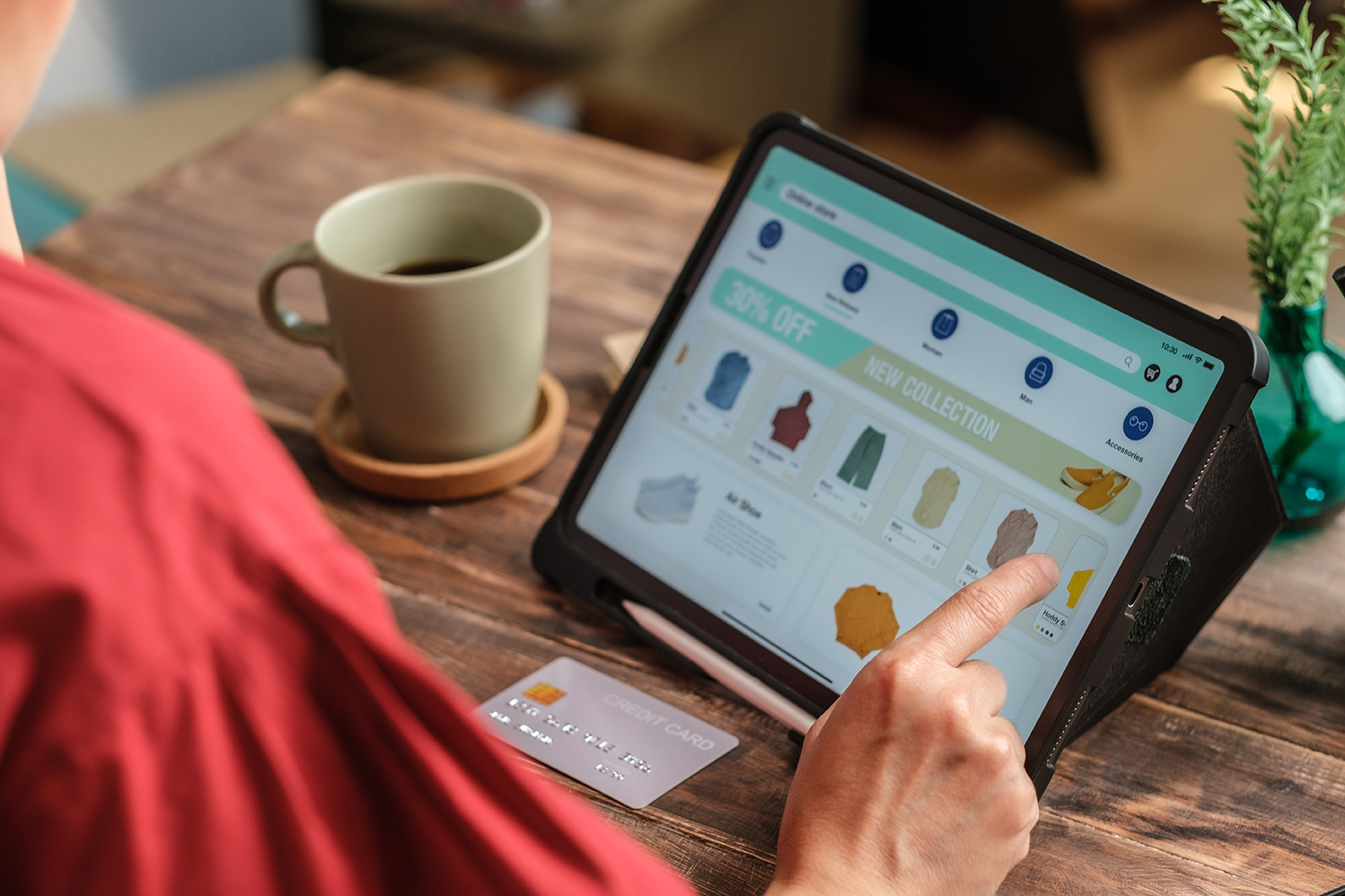
The Future of Digital Advertising: Trends to Watch out for
Digital advertising trends are always hot topics of discussion. This is especially true as the world enters challenging and testing times. Today getting the right message in front of the right people – at speed – has taken on even greater importance.
Today’s advertising landscape is evolving rapidly, from increasingly personalized ads and the continued shift toward digital to influencers, user-generated content, and the growth of e-commerce. This prompts the question, “What will advertising in the future look like?” Tune in to the podcast to explore advertising’s evolution.
Marketing techniques have evolved as the ways in which consumers get information change. Radio advertising led to TV advertising, which then shifted to digital marketing with the rise of the internet. Besides these natural market progressions, the COVID-19 pandemic is driving the scope of digital marketing even further online.
While TV remains a prime advertising medium for many businesses, digital marketing allows companies to reach a global audience online. As digital marketing initiatives continue to grow at a brisk pace, the number of jobs in the field is naturally increasing.

In this article, you’ll be learning how to stay ahead of the curve by exploring the emerging trends and innovations in the digital advertising landscape
1. Augmented reality and virtual reality in ads
Virtual reality (VR) is a computer-generated simulation of a three-dimensional environment that can be interacted with in a seemingly real or physical way by a person using special electronic equipment, such as a helmet with a screen inside or gloves fitted with sensors.
Augmented reality (AR) is a similar technology that superimposes computer-generated images on the real world, allowing people to interact with them.
Both VR and AR have the potential to change the way we interact with the world around us.
And, as new and more sophisticated hardware and software is developed, it’s likely that these technologies will become more commonplace in our everyday lives.
Here are some ways that VR and AR could change advertising:
- Advertisements could become more immersive and realistic
With VR, advertisers could create commercials that whisk consumers away to far-off lands or place them in the middle of exciting action scenes. AR could also be used to create ads that are interactive and engaging, such as games or quizzes. - Advertisements could be targeted to specific demographics
By using VR and AR, advertisers could create ads that are targeted to specific demographics, such as age, gender, or interests. For example, a cosmetics company could create an ad that is specifically targeted to young women who are interested in makeup. - Advertisements could be more personalized
VR and AR could also be used to create more personalized ads. For example, a clothing company could create a virtual dressing room where consumers could try on clothes before they buy them. Or, a food company could create an AR experience that would let people see how their favorite food is made. - Advertisements could be more interactive
With VR and AR, advertisements could be more interactive and engaging. For example, a car company could create a VR test drive that would let people experience what it’s like to drive a new car. Or, an airline could create an AR experience that would let people explore a destination before they book a trip. - Advertisements could be more cost-effective
VR and AR could also make advertisements more cost-effective. For example, a company could launch a virtual reality campaign that can be experienced by anyone with a VR headset. - Advertisements could be more sustainable
VR and AR could also be used to create more sustainable advertisements. For example, a company could create an AR experience that would let people see the impacts of climate change on the environment. - Advertisements could be more entertaining
Finally, VR and AR could make advertisements more entertaining. For example, a movie studio could create a virtual reality experience that would let people step into their favorite film. Or, a theme park could create an AR experience that would let people explore the park and attractions before they visit.

How you can integrate AR and VR in your advertising process
- Try-before-you-buy
With the advent of virtual reality, window shopping is a thing of the past. Customers no longer have to imagine what their dream couch would look like in the living room, how the latest makeup would appear on their face or even how their favorite shoes would appear from their perspective.
Companies like IKEA, L’Oreal and Gucci have implemented virtual reality
try-before-you-buy campaigns in which customers can use their phones to place the company’s products in their room to see what it looks like before they even take a trip to the store. L’Oreal has a virtual makeover app called Makeup Genius, which allows customers to pick and choose a variety of hair colors and makeup styles from their phone’s cameras. Gucci’s app briefly had a filter for the camera through which customers could see what the new line of Ace shoes looked like on their feet. This feature later became a universal Snapchat filter, giving better access to more users. - Virtual rooms
VR allows companies to connect with customers on an experiential level. Examples include 360-view virtual reality videos, immersion-style test drives and brand-related product experiences.
VR advertising has an inherent advantage over traditional advertising: It places users in a distraction-free environment, and companies are incentivized to create high-quality content to engage the viewer for as much time as possible. A virtual room differs from other forms of VR advertising – say, a 360-degree immersive video experience – in that the user is interacting with the content the entire time they’re inside the room. - Storytelling and the VR approach
At the heart of advertising in virtual reality is a new form of storytelling that drives fascination from users as well as from advertisers. More traditional forms of media support linear storytelling – there’s a clear-cut beginning, middle and end of the overall advertisement. With VR, a user has autonomy within the story and can look and go anywhere.
Immersive storytelling is also present in how VR technology is developing. This kind of changing technology has resulted in different companies offering education to brands on how to use VR and responsive storytelling to better a company’s overall brand.
2. Voice search optimization for ads
Voice search optimization is the process of optimizing your ads to appear in voice searches.
When you optimize for voice search, you optimize for the way people conduct verbal searches.
Voice search optimization gives you the chance to have your ads read out loud by a voice search device.
Here are a few tips that will help you get started optimizing your ads for Google Voice Search:
- Start by taking a look at your existing search term data
Before you begin optimizing your ad campaigns for voice search, it’s important that you look at the data you have on which search terms consumers use to find your brand online. Take a look at your search term report on AdWords to identify which long-tail queries trigger your PPC ad campaigns. Google doesn’t provide a separate report for voice search queries.
However, there are ways to find out which queries might come from consumers utilizing voice search.
Once you export the report, filter the data to return search terms beginning with “OK Google.” This allows you to see some of the exact terms leveraged by search engine users when they look for brands like yours through Google Voice Search. - Launch dedicated question ad campaigns on Google Ads
As previously mentioned, Google Voice Search queries are typically more conversational than typed queries. This is most likely because consumers who type queries into the search bar recognize that they are interacting with a machine and deliberately use shorter, logical phrasing.
Voice search users, however, tend to use more filler words and conversational questions, as they would when talking to a person. Also, due to the conversational nature of voice search queries, these consumers are more likely to ask a question. For your business, that means you need to develop dedicated question ad campaigns and bid on question-based keywords to drive intent.
Meanwhile, the type of question a search engine user asks can reveal a lot about their degree of intent. For instance, “what,” “who,” and “why” based questions indicate interest, but not necessarily a desire to take action. Questions that begin with “when” and “where” tend to indicate that a user may be more ready to buy.
Going forward, you can consider these nuances when developing a list of target question-based keywords for your campaigns. If you’re trying to reach consumers who are ready to buy, you use different types of question-based keywords than if you are trying to attract consumers who are in the awareness or consideration phases of the buyer’s journey. Target the question-based keywords that make the most sense based on your unique conversion goals. - Consider including the top three question keywords in your PPC campaigns
While most voice search users are utilizing long-tail keywords in their queries, it’s important to remember that long-tail search queries often have low traffic volume. Your business should include the top three question keywords or keyword phrases in your sets to capture more voice queries in your ad campaigns.
Use Google AdWords keyword planner to investigate the volume and competition levels for the your target keyword phrases. In addition to lower volume, less competitive keywords, you may want to use question-based keywords that have a higher search volume. This will help ensure that you are expanding your reach on the search engines for voice search users. - Create relevant and contextual landing pages
If you are serious about your PPC campaigns, you should already be creating relevant and contextual landing pages for ad traffic. Many beginners make the mistake of driving PPC ad traffic back to their home page. However, this doesn’t create an effective gateway to the next step in conversion, as it frequently offers too many options for the consumer. That, in turn, can cause them to navigate away from the page before taking any desired action.
Instead, create PPC landing pages that are optimized for conversion. That is, specific and contextual landing pages guide users to the next step in the buyer’s journey. Among other things, ensure that your landing pages are optimized in the same way your ad copy is. If your ad addresses a question-based keyword, you should discuss the answer to this question in your landing page copy. Similarly, ensure that the offer you are delivering through the landing page relates to the ad content.
Also, because many Google Voice Search users are using mobile devices, ensure that your landing pages are optimized for mobile. That means keeping graphics to a minimum and keeping any copy on the page clear and concise. - Customize ad copy to answer search query questions
No matter what type of target audience you address with your ad campaigns, it’s vital to create customized ad copy that is relevant to the search query. Your ad content should provide some context based on the targeted search terms. It should also entice users to click on your link and take the next step toward conversion.
When it comes to Google Voice Search, consider answering the question-based query in your ad content. For instance, let’s say you are targeting the question-based phrase “where can I buy camera equipment near me?”. You should ensure that the ad content clearly answers this question while inviting the user to click to learn more. Naturally, the more relevant and engaging your ad copy, the more likely search engine users will click on your ad.

3. Programmatic advertising advancements
Programmatic advertising refers to the process of how ads are purchased and sold in the advertising market and uses automated technology and algorithmic tools for media buying.
Contrary to conventional media buying techniques, it is employed for automation. It aids in the analysis of user signals to determine how an advertisement might be presented to the appropriate audience at the appropriate time and place.
How to differentiate between programmatic ads and display ads?
Programmatic and display ads can be confusing to distinguish, particularly with Google’s advancements in automated and real-time bidding. However, there are two key differences
between the two:
Firstly, programmatic refers to the way ads are purchased, while display refers to the ad format.
Secondly, display ads are primarily used within a single ad network, such as the Google Display Network, whereas programmatic advertising expands beyond this, using platforms such as sell-side and demand-side platforms to buy ad inventory across multiple networks.
Regardless of the approach taken, advertisers typically have control over several key aspects, including audience, bidding strategy, budget, creative and assets, and ad placements.

Below are the top trends that will dominate the programmatic advertising scene, allowing you to optimize your ad campaigns and get greater results.
- Programmatic Audio Advertising: Audio advertising, including podcasts and streaming music platforms, is gaining significant momentum. Programmatic audio advertising allows marketers to target listeners based on their interests, demographics, and listening habits, providing a unique opportunity to reach a highly engaged audience. In future, we can expect to see a surge in programmatic audio advertising, enabling brands to deliver targeted audio messages to captivate their audience and boost brand awareness.
- Increased Adoption of Artificial Intelligence (AI): AI has revolutionized programmatic advertising, and its effect is expected to grow even greater in future. Artificial intelligence-powered computers can analyze huge amounts of data in real-time, allowing marketers to make more educated decisions and optimize ad targeting. Machine learning algorithms can recognize patterns and trends, allowing marketers to provide personalized and relevant adverts to their target audience, leading to increased engagement and conversions.
- Contextual Targeting and Privacy Compliance:As user privacy and data security become more important, contextual targeting is gaining appeal as an alternative to behavioural targeting. Contextual targeting is analysing a webpage or app’s content and context to serve appropriate advertisements. This method protects user privacy while delivering personalized messaging based on the context. In the near future, contextual targeting will play a critical role in programmatic advertising, allowing marketers to reach their target demographic while maintaining confidentiality.
- Programmatic Out-of-Home (OOH) Advertising:Out-of-home advertising is transforming, thanks to programmatic technology. With programmatic OOH advertising, brands can leverage real-time data, location-based targeting, and dynamic ad serving to deliver targeted messages to consumers in specific physical locations. In 2024, we expect to see an increase in programmatic OOH campaigns, enabling advertisers to create more personalized and contextually relevant experiences for consumers in the offline world.
- Enhanced Transparency and Ad Fraud Prevention: Ad fraud and transparency have long been issues in the programmatic advertising ecosystem. In 2024, industry participants will continue to prioritize openness and comprehensive ad fraud protection methods.
Blockchain and artificial intelligence will be critical in preventing ad fraud, giving advertisers more trust in the integrity of their programmatic ad campaigns.
4. The impact of artificial intelligence on ad targeting
In the past, advertisements were created with traditional methods such as art and copywriting.
However, with the prevalence of advertising on social networking sites, it is now crucial for companies to get their message across in a way that is concise and compelling. To gain a competitive edge through distinguishing ads, they need to understand how their customers are engaged with the current ads. Brands need to be smart to not only reach their audiences but also capture their attention. Yet, the growing competition can be challenging for businesses trying to build client relationships and more importantly, loyalty. So, how are brands coping with this increasingly demanding scenario?

In the current digital wave, brands are improving advertisement targeting by using machine learning techniques. It has led to a new wave of advertisements that are more realistic and engaging than ever before.
What then is Artificial Intelligence (AI)?
Artificial intelligence (AI) is a set of technologies that enable computers to perform a variety of advanced functions, including the ability to see, understand and translate spoken and written language, analyze data, make recommendations, and more.
AI is the backbone of innovation in modern computing, unlocking value for individuals and businesses. For example, optical character recognition (OCR) uses AI to extract text and data from images and documents, turns unstructured content into business-ready structured data, and unlocks valuable insights.
Benefits of Using AI in Advertising
Artificial intelligence is still a relatively new technology, but its potential applications are endless. Furthermore, how ai is used in advertising is proving to be particularly useful for the advertising industry. Some benefits of using AI in advertising include:
- Target Your Ads More Effectively Through Data:
Advertisers are always looking for new and effective ways to target their ads. Recently, there has been a lot of talk about using big data to help improve ad targeting. Big data is a term used to describe a large amount of data that is now available due to the growth of digital technologies. This data can be used to predict consumer behavior and preferences for creating targeted ads. According to Forbes, “The most recent research indicates that a combination of AI and big data can automate nearly 80% of all physical work, 70% of data processing work, and 64% of data collection tasks”. - Helps Optimize Your Campaigns for Better Results
Artificial intelligence is being used increasingly in digital marketing, as it can help optimize campaigns for better results. AI can identify what is working and what isn’t in a campaign, and make changes accordingly. Optimized campaigns designed as per the audience’s needs help improve customer engagement and retention. It also provides companies with increased ROI. - Helps Save Money and Time With Increased Sales
AI can help you save time and money because it can swiftly categorize the huge amounts of data that are available in this day and age. It also spots trends and patterns which are useful in making better advertising decisions. Companies like Amazon are using AI for driving pricing strategies that help to reduce prices for more sales. They have also used AI to understand and leverage pricing strategies, like when the demand for a product increase, they increase the product price too. Thus, helping companies augment more sales and revenue. - Reduce the Risk of Losses in Ads
By using AI to help you with the marketing process, you can reduce the amount of money that you would otherwise lose if there were an error in your campaign. One of the benefits of using AI for ad campaigns is that it can help identify which ads are most likely to result in a sale. This allows businesses to focus their efforts on the ads that are most likely to be successful, reducing wasted money and time on ineffective campaigns.
Another benefit of AI is that it can help identify potential threats early on in the campaign lifecycle. By identifying threats early, businesses can take steps to mitigate the risks. - Improving Customer Experience
With AI, you can have better customer communication and a more personalized style of service. It can help companies learn about their customers, understand their needs and desires, and then predict their future behavior. It allows companies to provide customers with personalized and the best possible service and products. For example when Nike leveraged AI to provide its customers with the capability to design their sneakers in-store. It helped them to collect more data and design future products accordingly.
Such AI-backed advertising techniques are immensely crucial for customers who are more likely to purchase when they feel that their preference is being well taken care of.
Challenges and Risks of AI in Advertising
While AI offers many benefits to the advertising industry, there are also some challenges and risks that need to be considered:
- Data privacy
One of the biggest risks of AI in advertising is the potential for data privacy breaches. AI relies on large amounts of data, and if that data is not properly secured, it could be vulnerable to cyberattacks. - Bias in data
Another challenge with AI advertisement is the potential for bias in the data used to train the algorithms. If the data is biased, the AI system may make biased decisions, leading to discriminatory or unfair advertising. - Lack of transparency
AI algorithms can be difficult to interpret, making it challenging for advertisers to understand how decisions are being made. This lack of transparency can be a problem when it comes to compliance with regulations and ethical considerations. - Ad fraud
AI can be used to perpetrate ad fraud, such as fake clicks or impressions, which can lead to wasted advertising spend and inaccurate measurement of campaign success.
Technical complexity: The implementation of AI in advertising requires technical expertise, which may be a challenge for smaller businesses or those without dedicated IT departments.
In conclusion, as the digital advertising landscape continues to evolve, it’s vital for businesses to stay informed and adapt their strategies accordingly. Keep an eye on emerging trends, invest in data-driven insights, and collaborate with industry experts to ensure your brand stays ahead.
Embrace the future of digital advertising and unlock your business’s full potential today.










